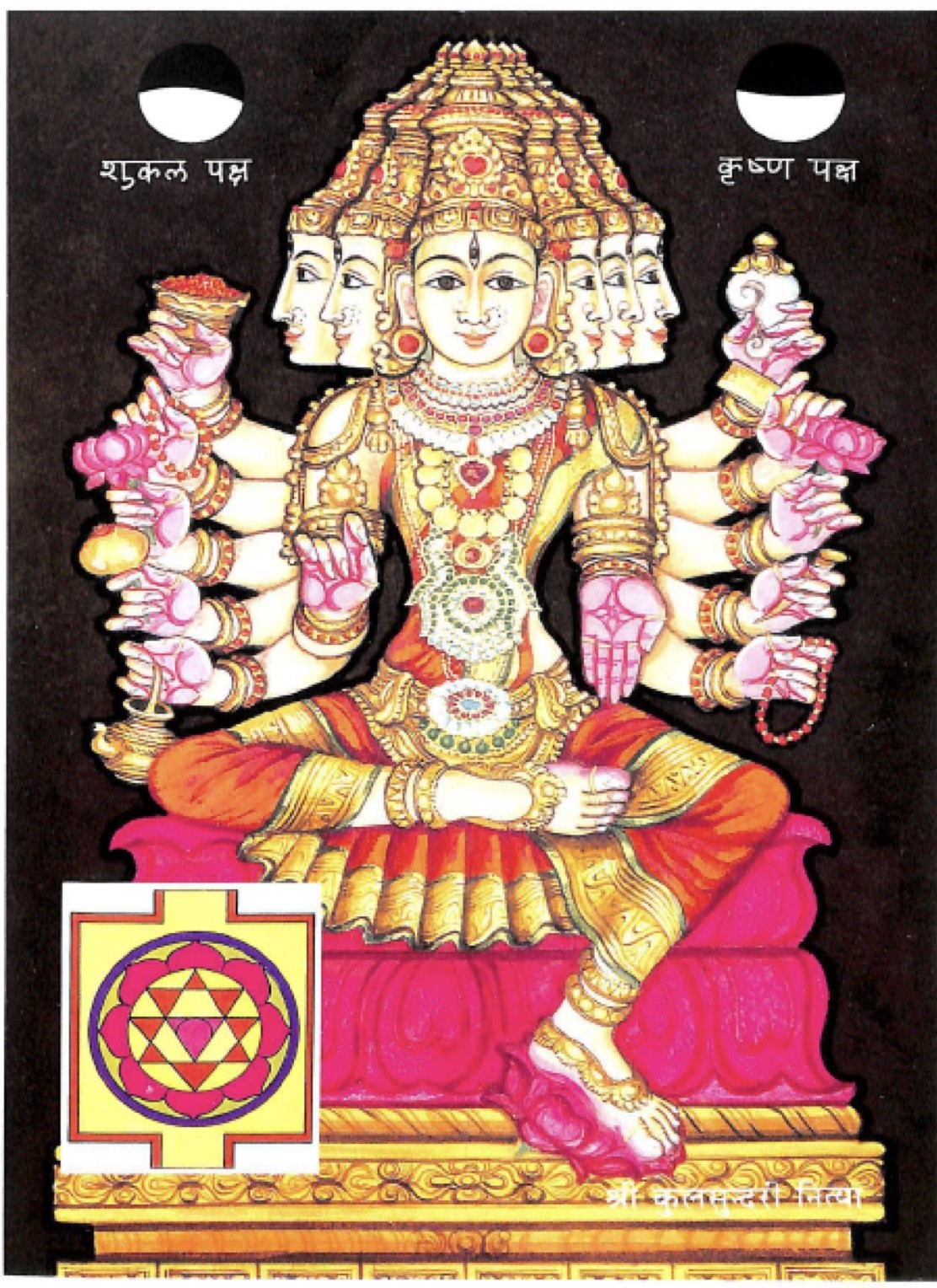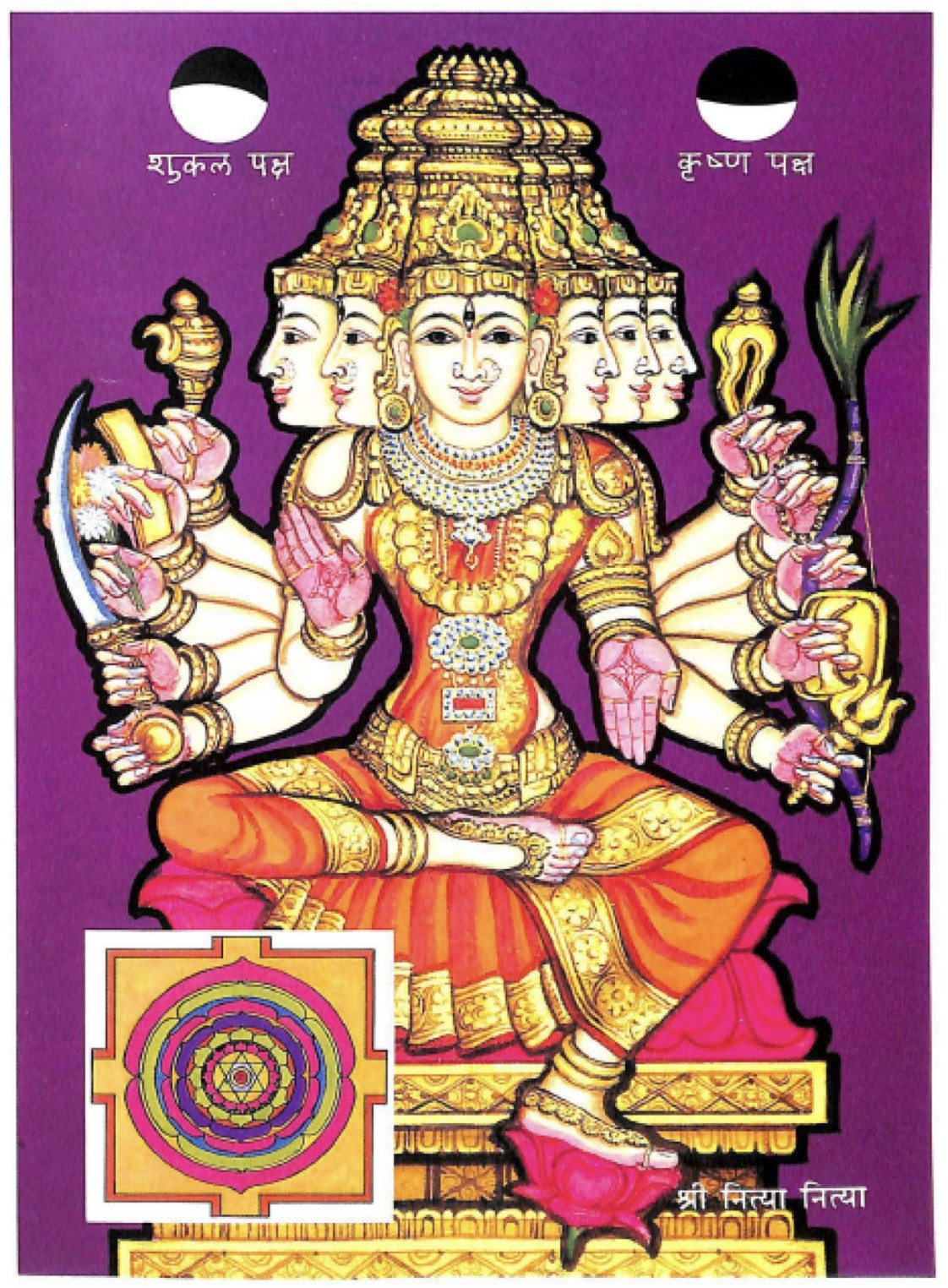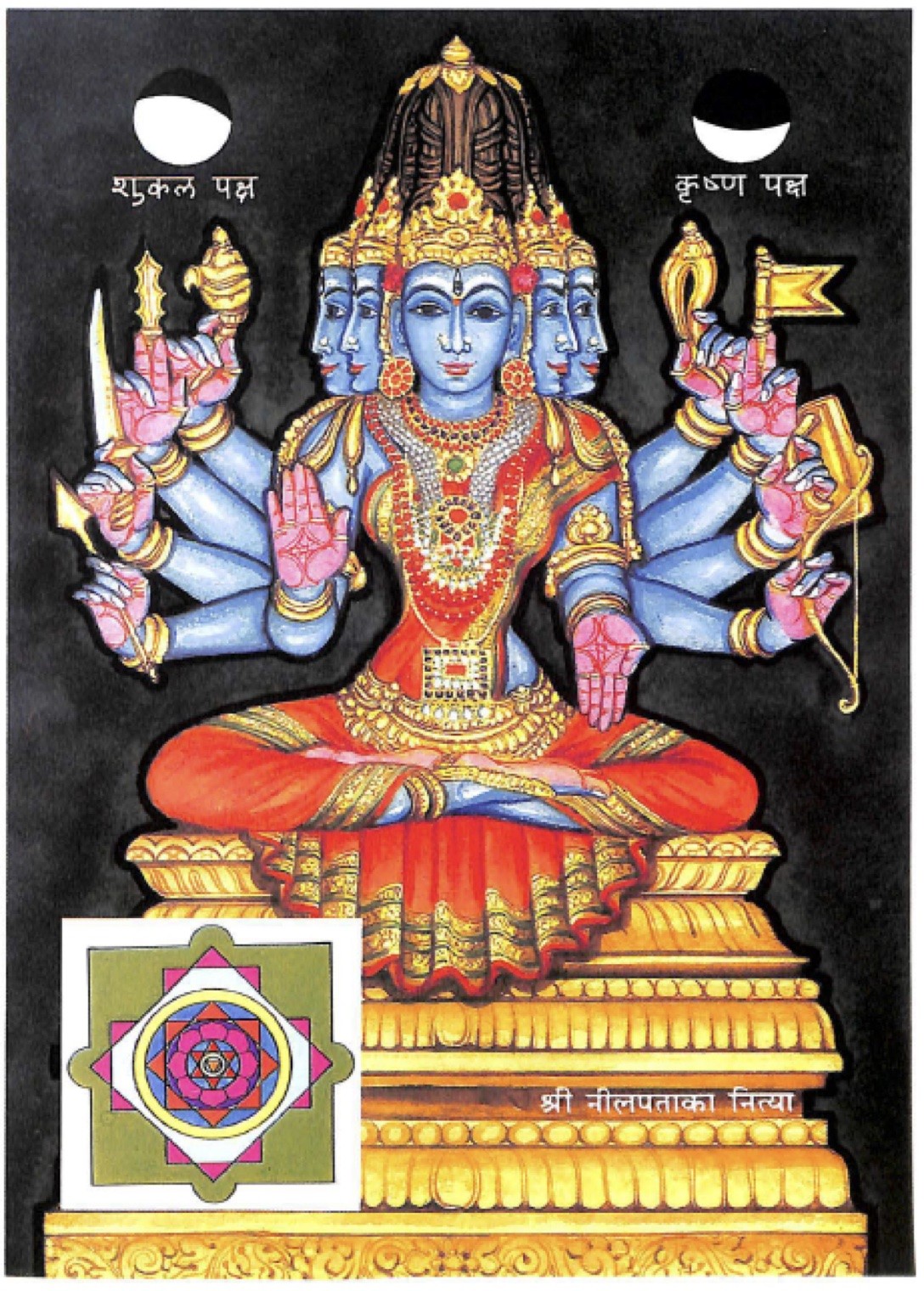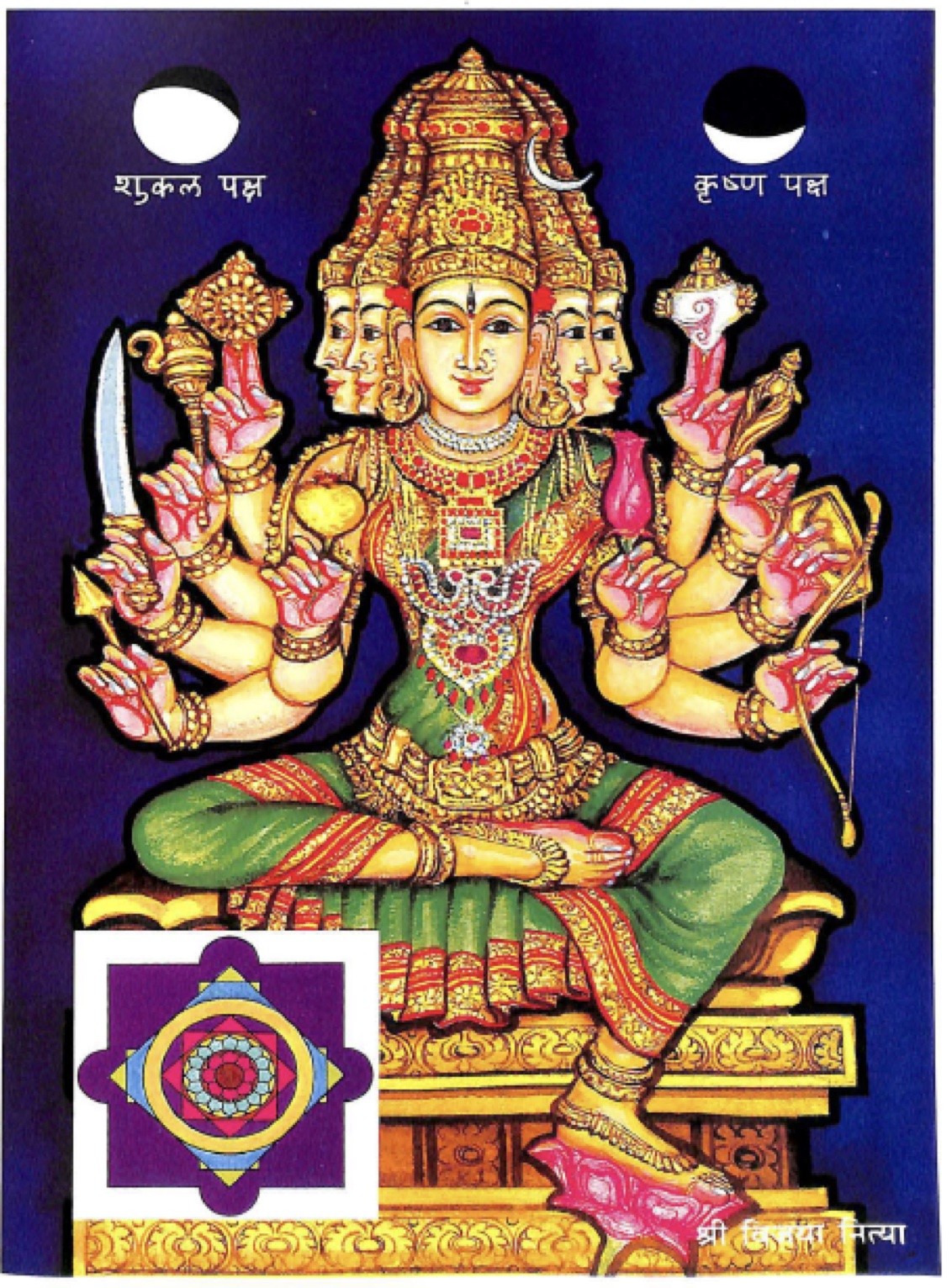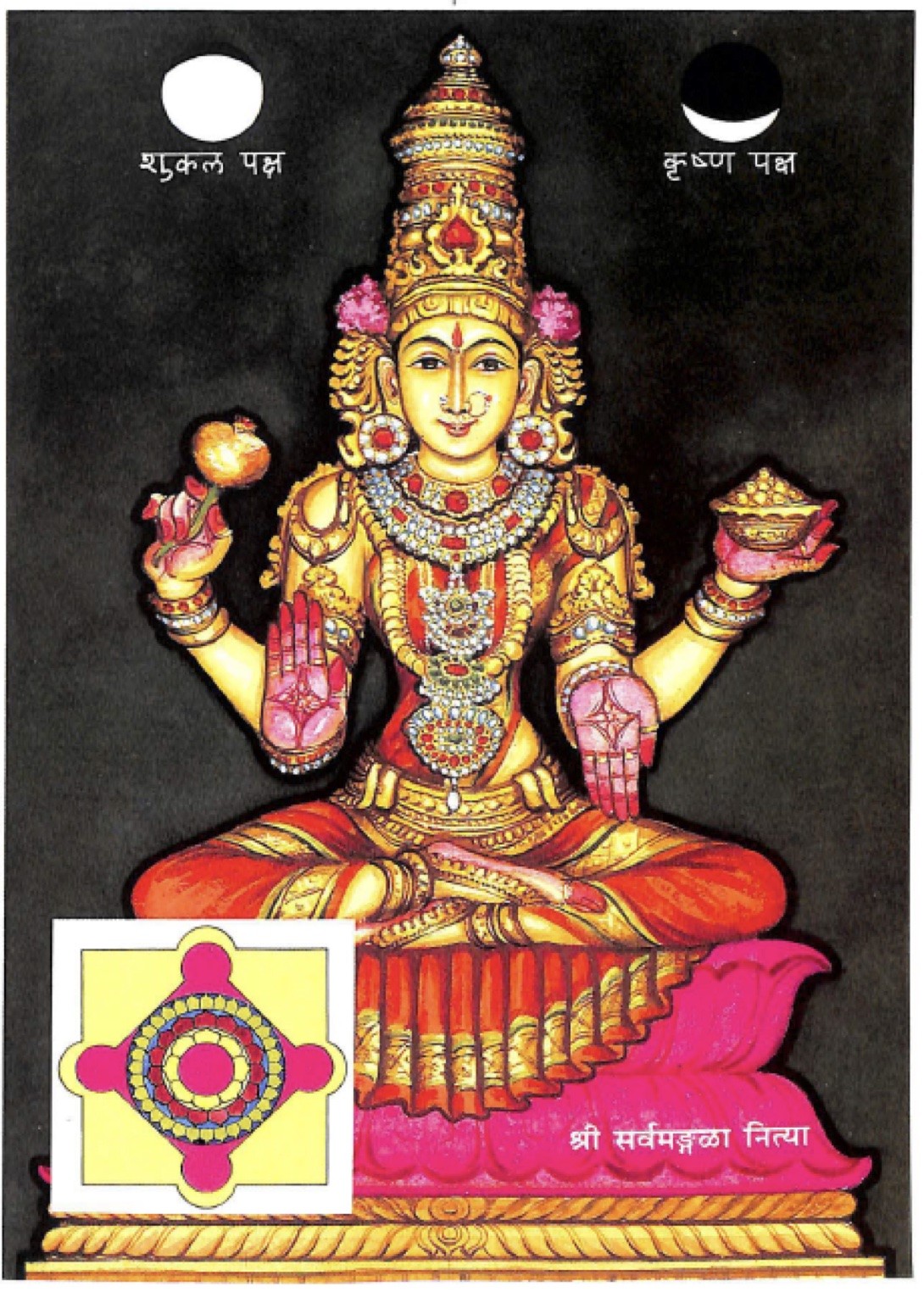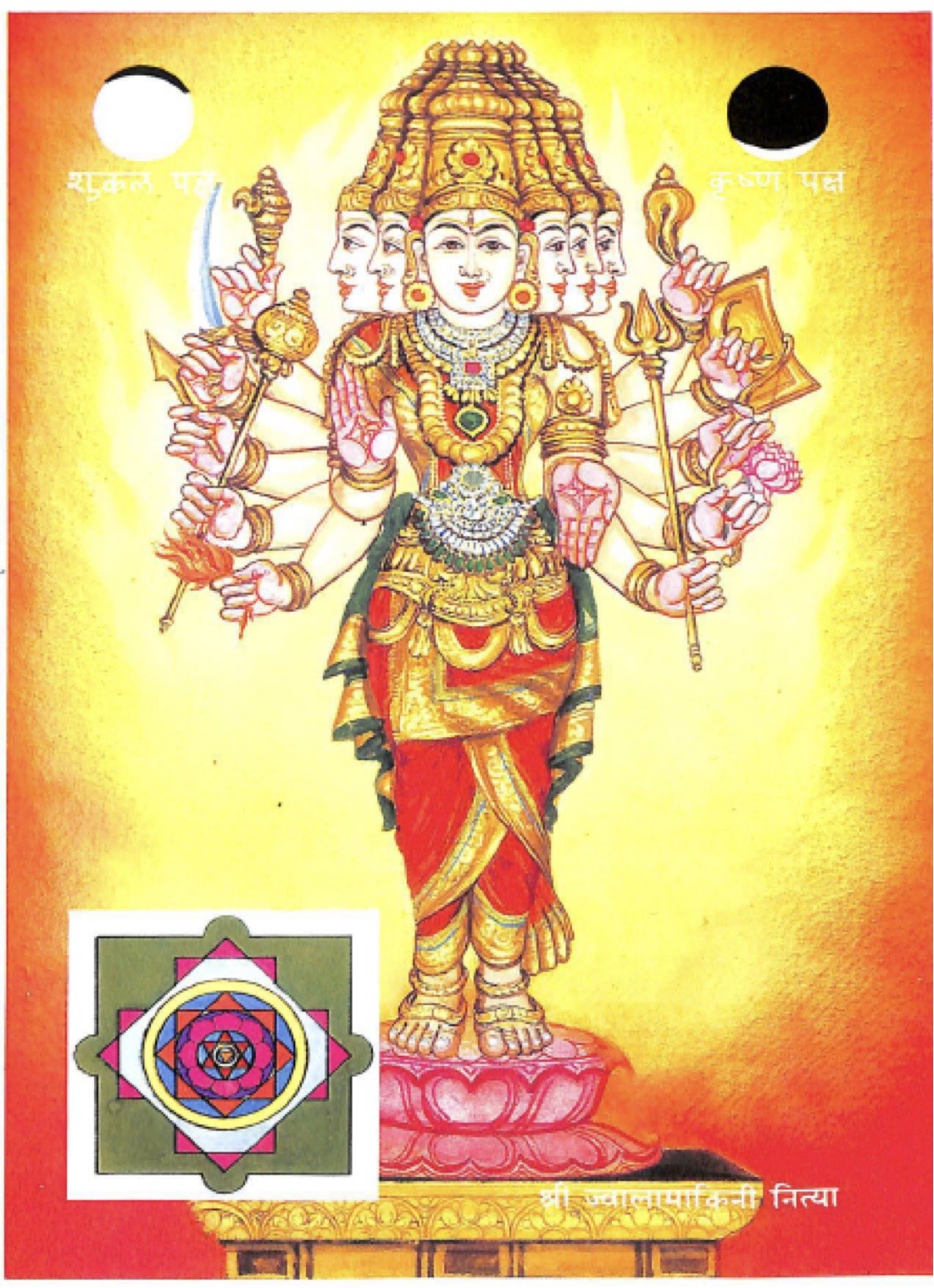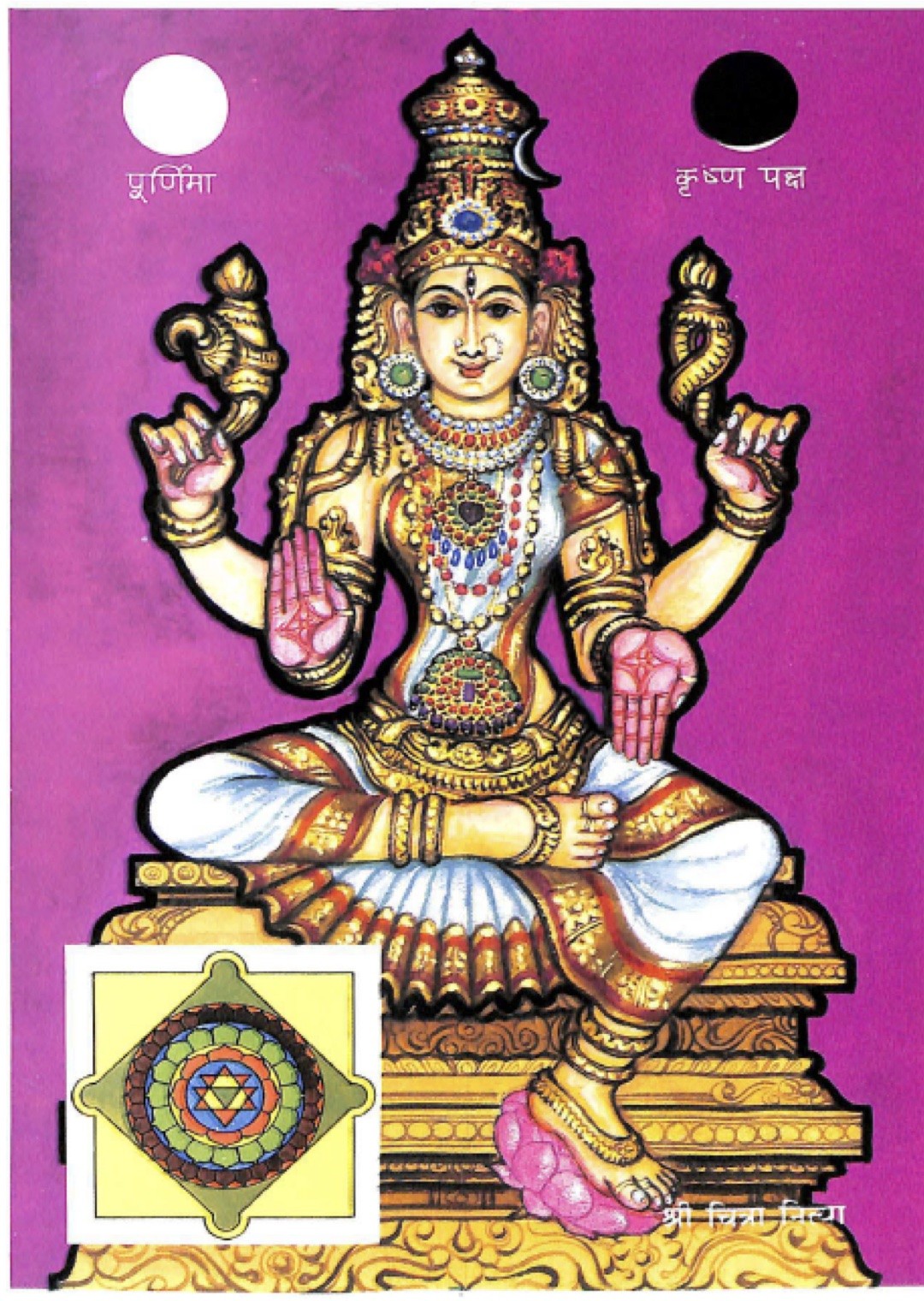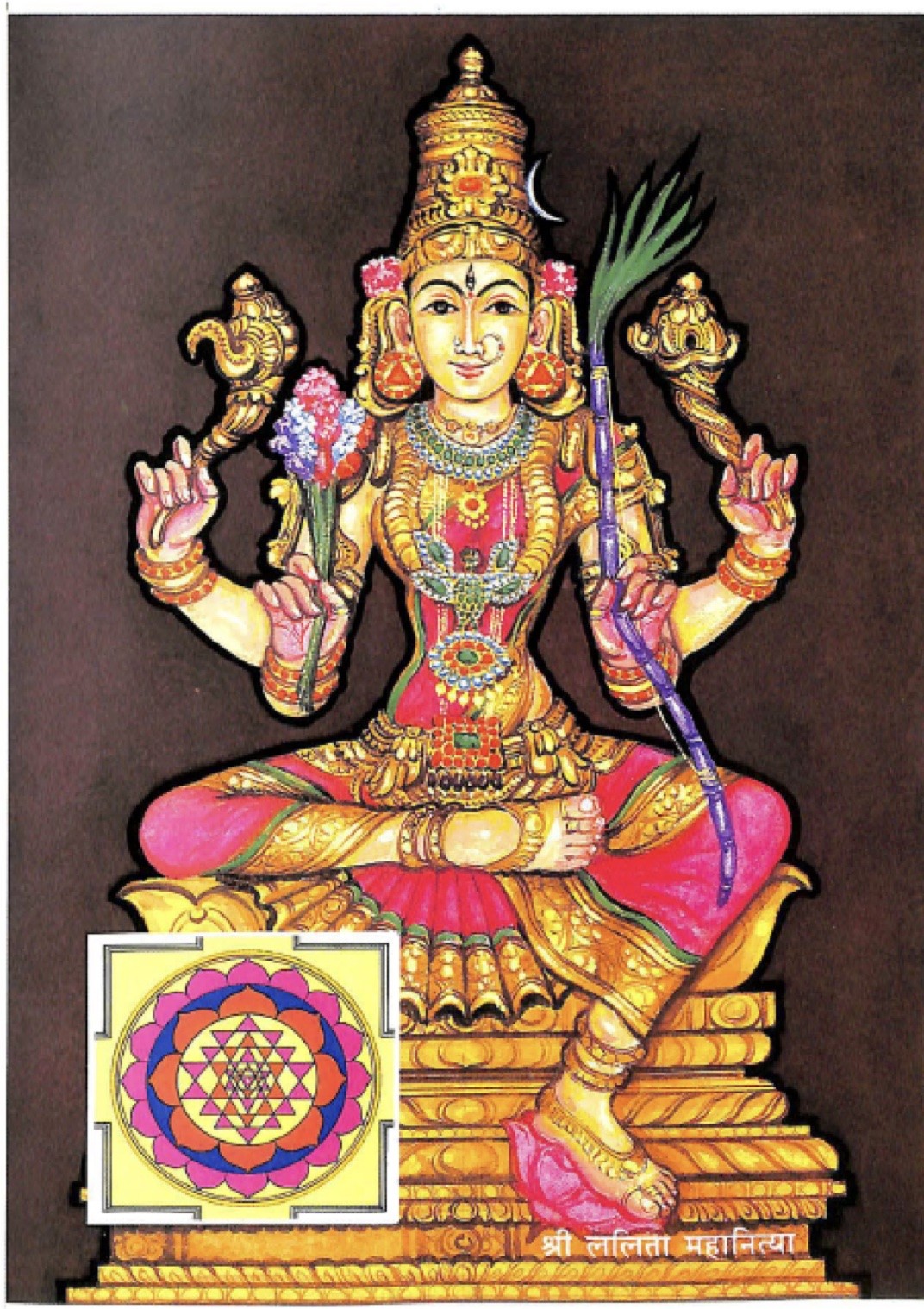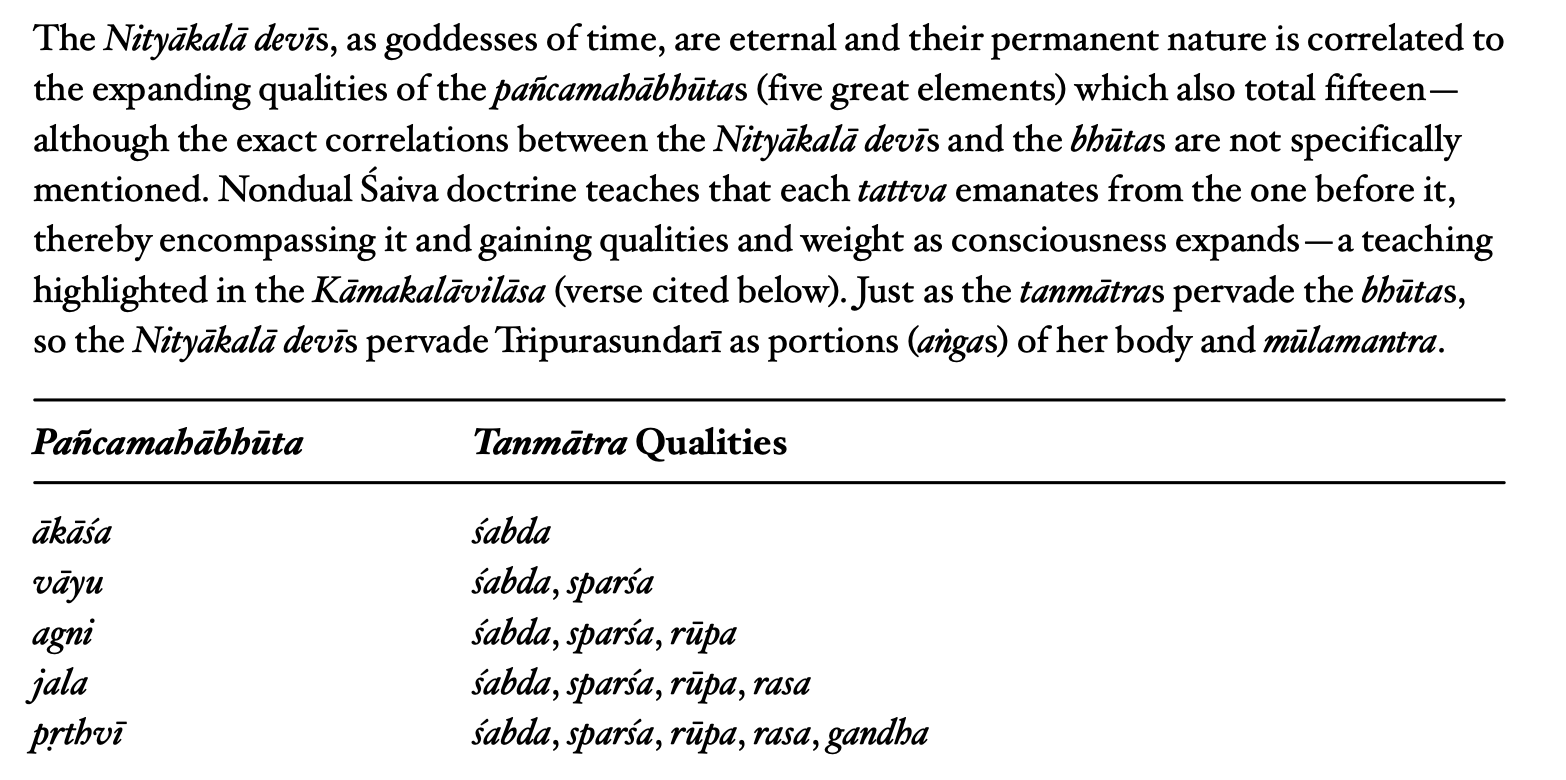I found on a blog which lunar phases correspond to each Nitya Devis, are these correct?
Because I found two.
The first is:Lunar Phases and Nitya Goddesses (Including Tripura Sundari)
From New Moon (Amavasya) to Full Moon (Poornima) - Shukla Paksha
1. Amavasya (New Moon) - Chitra (Chidroopa)
2. Pratipada (First Day) - Jwalamalini
3. Dwitiya (Second Day) - Sarvamangala
4. Tritiya (Third Day) - Vijaya
5. Chaturthi (Fourth Day) - Neelapataka
6. Panchami (Fifth Day) - Nitya
7. Shashti (Sixth Day) - Kulasundari
8. Saptami (Seventh Day) - Tvarita
9. Ashtami (Eighth Day) - Tvarita
10. Navami (Ninth Day) - Shivaduti (Roudri)
11. Dashami (Tenth Day) - Vahnivasini
12. Ekadashi (Eleventh Day) - Bherunda
13. Dwadashi (Twelfth Day) - Nityaklinna
14. Trayodashi (Thirteenth Day) - Bhagamalini
15. Chaturdashi (Fourteenth Day) - Kameshwari
16. Poornima (Full Moon) - Maha Tripura Sundari
---
From Full Moon (Poornima) to New Moon (Amavasya) - Krishna Paksha
1. Poornima (Full Moon) - Maha Tripura Sundari
2. Pratipada (First Day) - Kameshwari
3. Dwitiya (Second Day) - Bhagamalini
4. Tritiya (Third Day) - Nityaklinna
5. Chaturthi (Fourth Day) - Bherunda
6. Panchami (Fifth Day) - Vahnivasini
7. Shashti (Sixth Day) - Shivaduti (Roudri)
8. Saptami (Seventh Day) - Tvarita
9. Ashtami (Eighth Day) - Tvarita
10. Navami (Ninth Day) - Kulasundari
11. Dashami (Tenth Day) - Nitya
12. Ekadashi (Eleventh Day) - Neelapataka
13. Dwadashi (Twelfth Day) - Vijaya
14. Trayodashi (Thirteenth Day) - Sarvamangala
15. Chaturdashi (Fourteenth Day) - Jwalamalini
16. Amavasya (New Moon) - Chitra (Chidroopa)
---
Note:
This version includes Maha Tripura Sundari as the goddess associated with the Full Moon (Poornima), as stated in the source. The remaining 15 Nityas are correctly matched to their respective lunar phases.
And the second one it's:
Lunar Phases and Nitya Goddesses (Excluding Tripura Sundari)
From New Moon (Amavasya) to Full Moon (Poornima) - Shukla Paksha
1. Amavasya (New Moon) - Chitra (Chidroopa)
2. Pratipada (First Day) - Jwalamalini
3. Dwitiya (Second Day) - Sarvamangala
4. Tritiya (Third Day) - Vijaya
5. Chaturthi (Fourth Day) - Neelapataka
6. Panchami (Fifth Day) - Nitya
7. Shashti (Sixth Day) - Kulasundari
8. Saptami (Seventh Day) - Tvarita
9. Ashtami (Eighth Day) - Tvarita
10. Navami (Ninth Day) - Shivaduti (Roudri)
11. Dashami (Tenth Day) - Vahnivasini
12. Ekadashi (Eleventh Day) - Bherunda
13. Dwadashi (Twelfth Day) - Nityaklinna
14. Trayodashi (Thirteenth Day) - Bhagamalini
15. Chaturdashi (Fourteenth Day) - Kameshwari
---
From Full Moon (Poornima) to New Moon (Amavasya) - Krishna Paksha
1. Poornima (Full Moon) - Kameshwari
2. Pratipada (First Day) - Bhagamalini
3. Dwitiya (Second Day) - Nityaklinna
4. Tritiya (Third Day) - Bherunda
5. Chaturthi (Fourth Day) - Vahnivasini
6. Panchami (Fifth Day) - Shivaduti (Roudri)
7. Shashti (Sixth Day) - Tvarita
8. Saptami (Seventh Day) - Tvarita
9. Ashtami (Eighth Day) - Kulasundari
10. Navami (Ninth Day) - Nitya
11. Dashami (Tenth Day) - Neelapataka
12. Ekadashi (Eleventh Day) - Vijaya
13. Dwadashi (Twelfth Day) - Sarvamangala
14. Trayodashi (Thirteenth Day) - Jwalamalini
15. Chaturdashi (Fourteenth Day) - Chitra (Chidroopa)
---
Note:
This version excludes Maha Tripura Sundari, as her lunar phase is described as invisible to humans, according to the source text. The remaining 15 Nityas are correctly assigned to their respective lunar phases.
So which of the two is correct?
